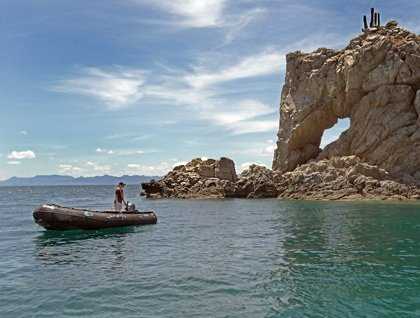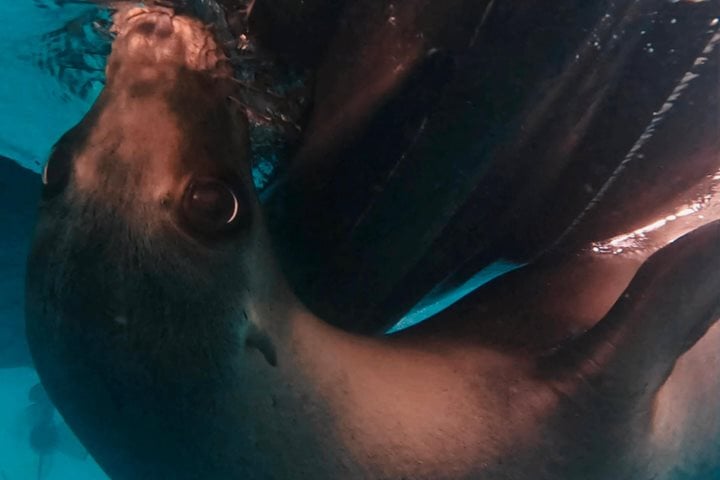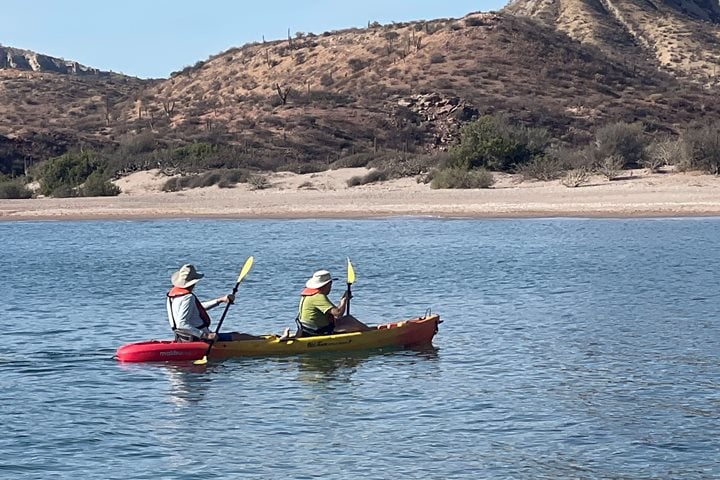The Sea of Cortez and the islands within it are always full of surprises. After our first night on board, we awoke beside Isla Monserrat near Loreto Bay. Sunlight played across the escarpment of the Sierra de la Giganta, a spine of ragged mountains that rises abruptly from the sea. Several mobula rays splashed in big belly-flops as we cruised along. We spent the morning watching the scenery passing by, attending an introductory talk on photography, and becoming familiar with the floating home we would share for the next week.
After lunch we arrived at Isla Catalina, our landing site for the day, and started our activities by snorkeling in a sheltered cove beneath a giant stone elephant. Schools of yellowtail surgeonfish, pairs of king angels, and colorful sea stars brightened the underwater world.
This island is isolated from the peninsula and over time, a number of species have evolved that are unique, or endemic. The most conspicuous is the giant barrel, a rotund, single-trunked cactus. These durable plants look like someone has pulled a plug and partially deflated them as they sag slightly in their otherwise impressive stature. Several adjacent islands have smaller individuals, but here on Catalina they are magnificent and may reach 15 feet in height. Flower buds ringed the tops of many and on a few, the maroon blossoms had opened their delicate petals. We hiked up a sandy arroyo, or dry creek bed, flanked by slopes of granitic rocks. Dr. Brad Hollingsworth, one of the guest leaders with the San Diego Natural History Museum, found a handsome spotted chuckwalla and other reptiles including the Catalina side-blotched lizards, which display a stunning teal tinge. One adventuresome group of hikers reached the crest of the island for a spectacular view of the other side and the sea that stretched for miles. Eventually all returned to the ship. The sun set beneath a tangerine sky as we enjoyed a delicious dinner and relaxed after a busy day.







